The Ancient Agora of Athens is the older of the two Agora archaeological sites in the city. Having seen continuous human occupation on the site since at least the Late Neolithic Period (around 3000 BC), the site is better known today as the centre of political, economic, and social life in ancient Athens.
The Ancient Agora was also culturally significant in ancient Athens for its shared connection with the nearby Acropolis. Every year on the last day of the annual Panathenaic festival, a procession would past through the Agora on its way up to the Acropolis. With this connection between the two sites, a visit to the Agora is a natural choice after visiting the Acropolis.
I visited the Agora in the winter of 2022, and here’s my experience.
First impressions of the site
While the site of the Agora is much larger than the Roman Agora, much of the structures on-site are in ruins. Most of the historical context is provided by infographic panels at the ruins of key buildings, but you still get a sense of the Agora’s significance in the ancient city from its sheer size alone.
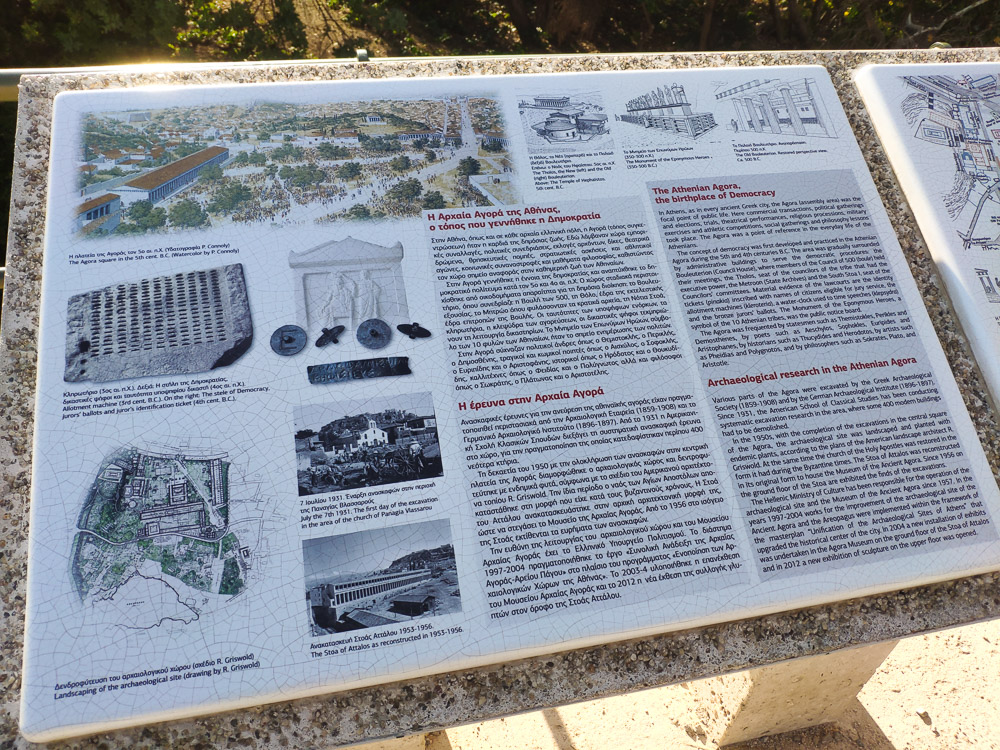
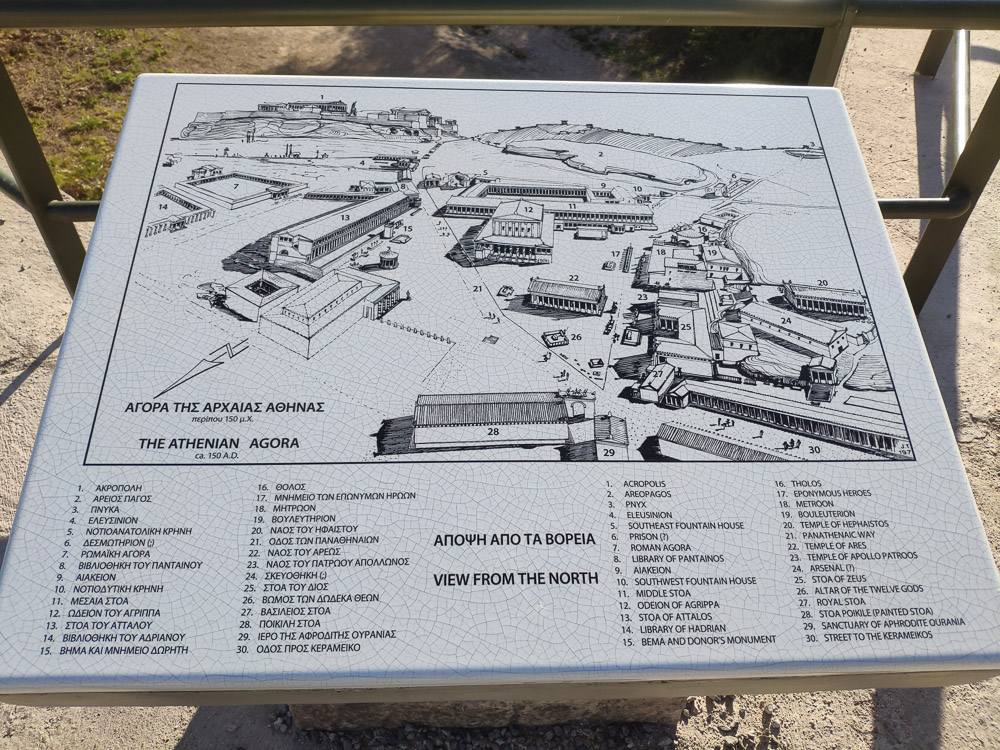
If you prefer looking at less ruinous things instead, the 3 main sites to look out for in the Agora are the Panathenaic Way, the Stoa of Attalos, and the Temple of Hephaestus.
Panathenaic Way | Παναθηναίων
Immediately after the ticket counter, a ramp brings you down onto the Panathenaic Way. This was a main avenue of the ancient city running from the Acropolis down through the Agora and to one of the main city gates. It is so named because the Panathenaic procession would make its way to the Acropolis on this very avenue.
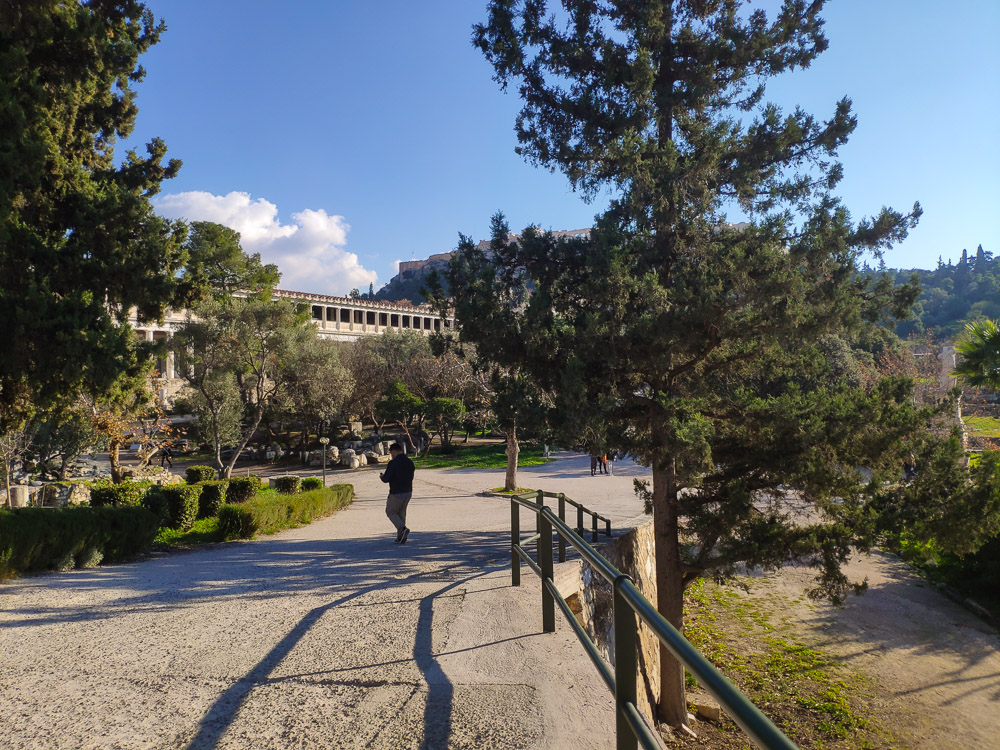
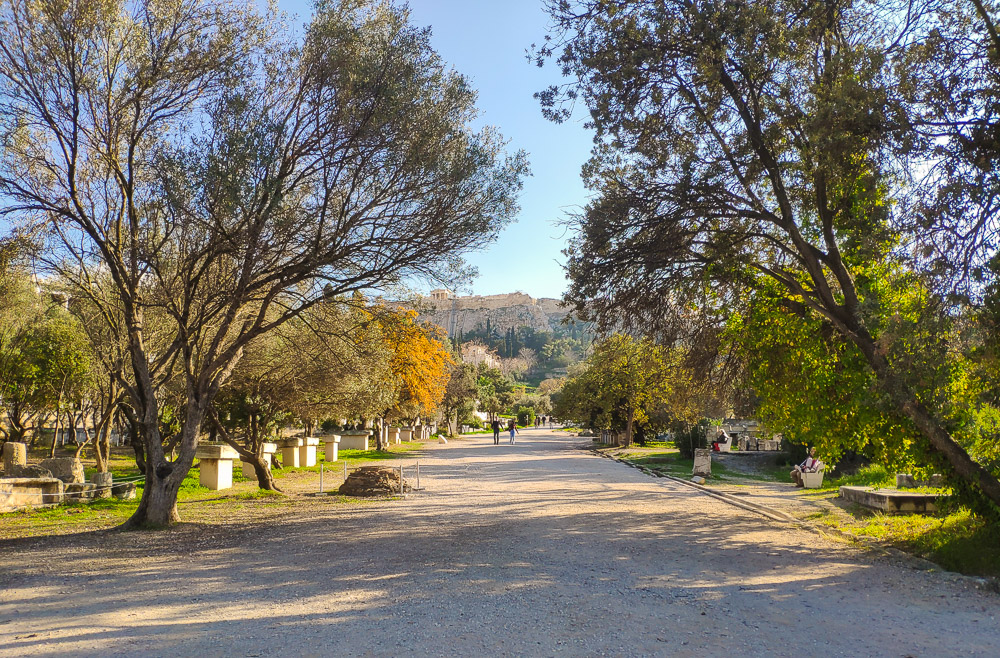
You can no longer walk the Panathenaic Way on its original course up to the Acropolis for obvious reasons. But if you have a strong imagination, feel free to gaze at the Acropolis from the site and imagine you’re in the middle of the celebratory buzz in the procession slowly making its way up.
Stoa of Attalos | Στοά του Αττάλου
The Stoa of Attalos was a stoa built by King Attalus II of Pergammon in the 2nd century BC as a gift to the ancient city. In its heyday, the Stoa functioned as a commercial centre much like other stoas, but its two-storey layout, coupled with its size and more elaborate design, made it stand out compared to other buildings and stoa from the ancient era.
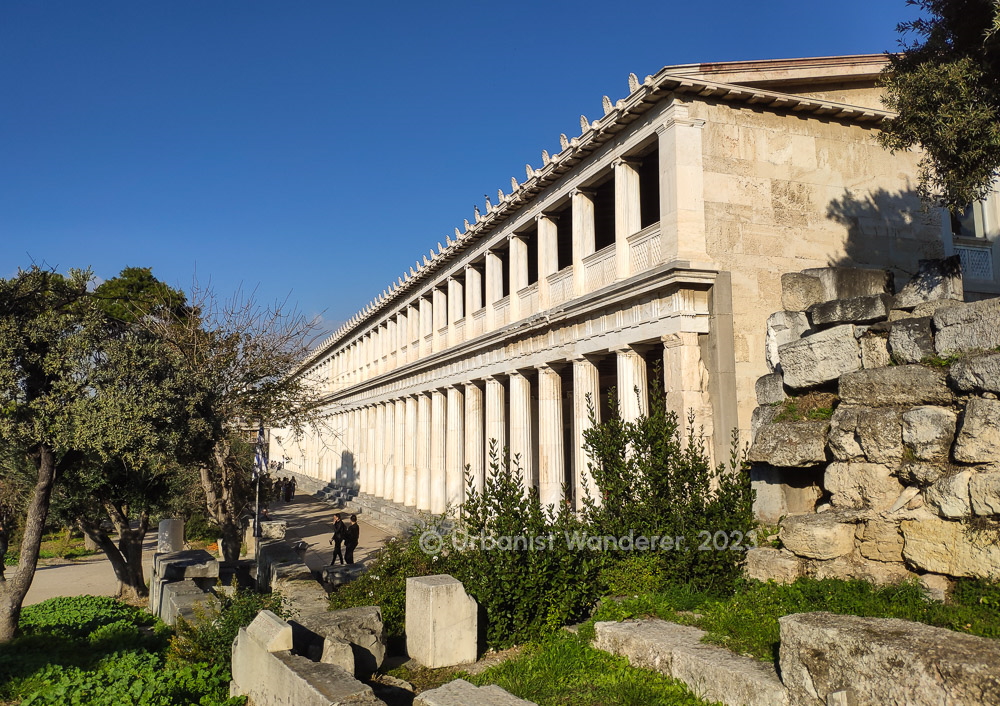
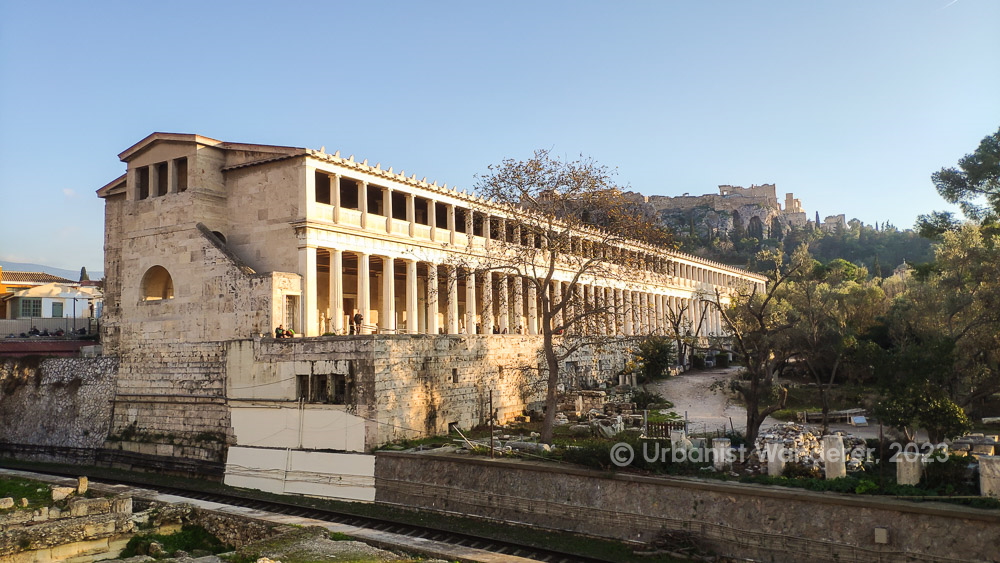
The original building was destroyed in the Heruli’s invasion and destructive sack of Athens in 267 AD. The version seen today is a high fidelity reconstruction done between 1952 and 1956 on the same foundations of the ancient building, incorporating as much of the remaining original structure and materials as possible. To cap things off, limestone from Piraeus, Pentelic Marble from Mount Pentelicus, and clay roof tiles from Attica were quarried and used in the reconstruction, just as the original did.
The design of the Stoa combines two architectural orders, and this is notably reflected in its colonnade on the ground floor. Look at the pillars supporting the exterior and interior colonnade, and you’ll see this at play – the exterior colonnade uses the Doric Order, and the interior colonnade uses the Ionic Order.
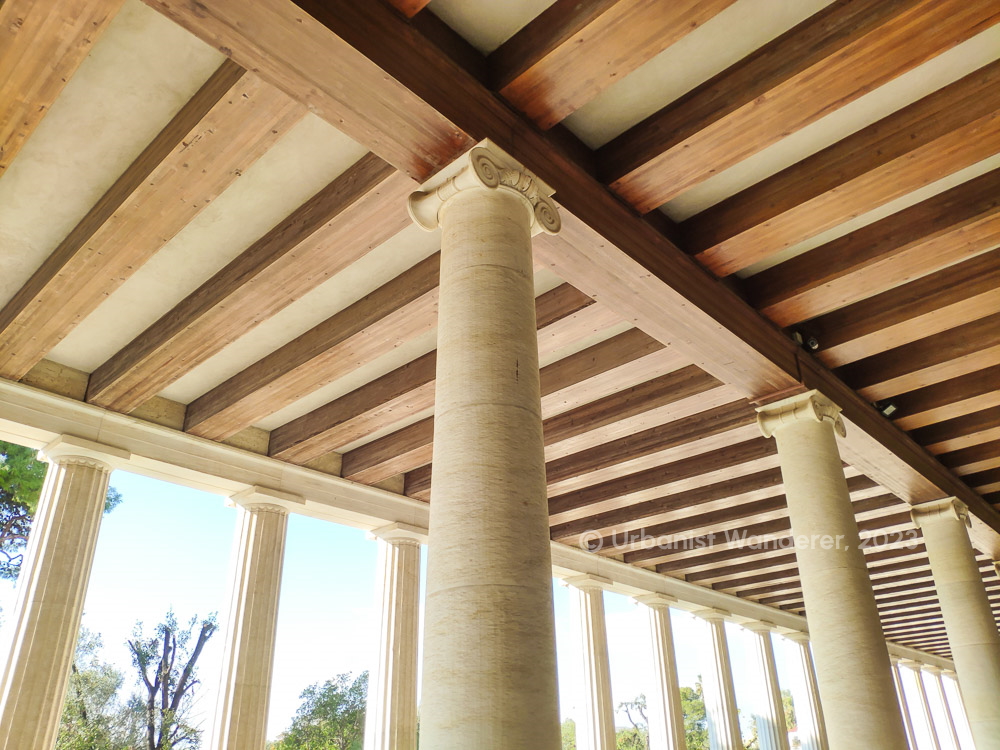
The portico on the ground floor is also a great spot for photography thanks to its long line of columns. You will have to be a bit patient though, as many other tourists will have the same photo ideas.
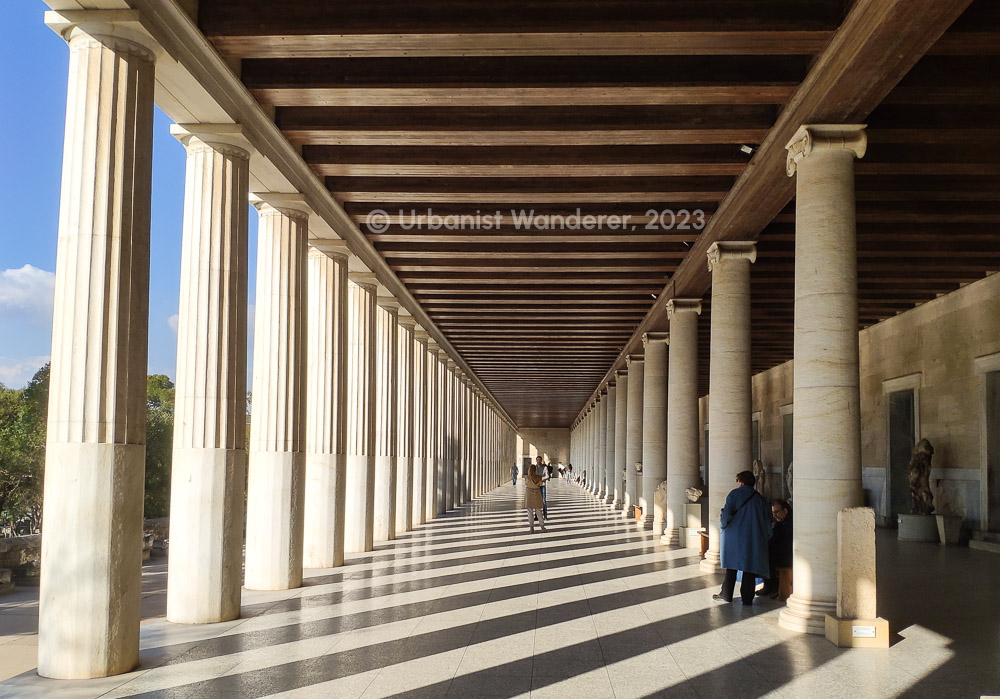
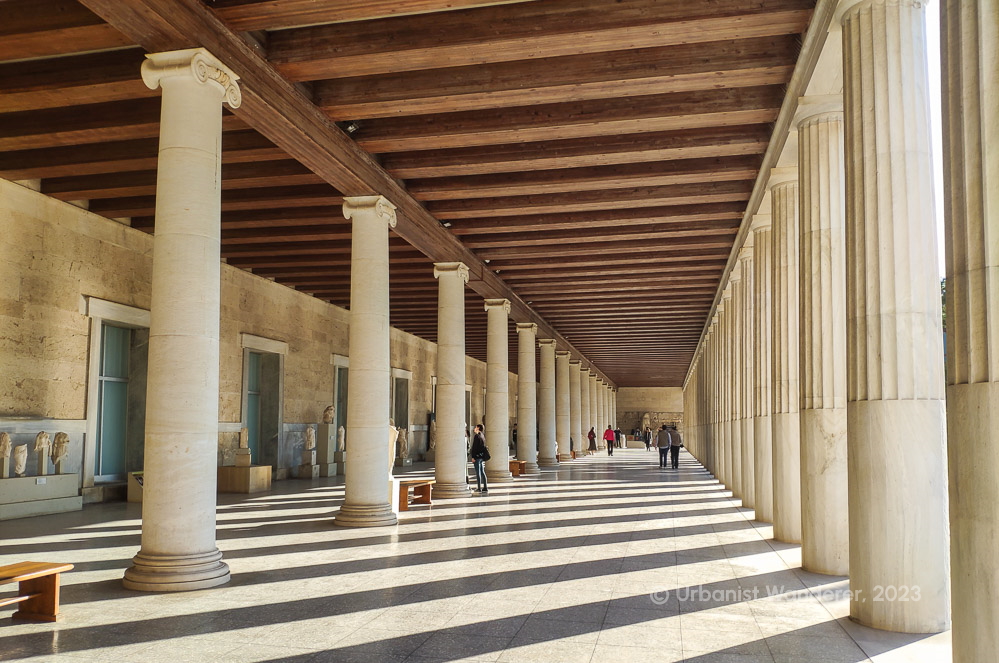
Museum of the Ancient Agora
The Stoa also houses the Museum of the Ancient Agora on its ground floor, a small museum dedicated to the history of the Ancient Agora.
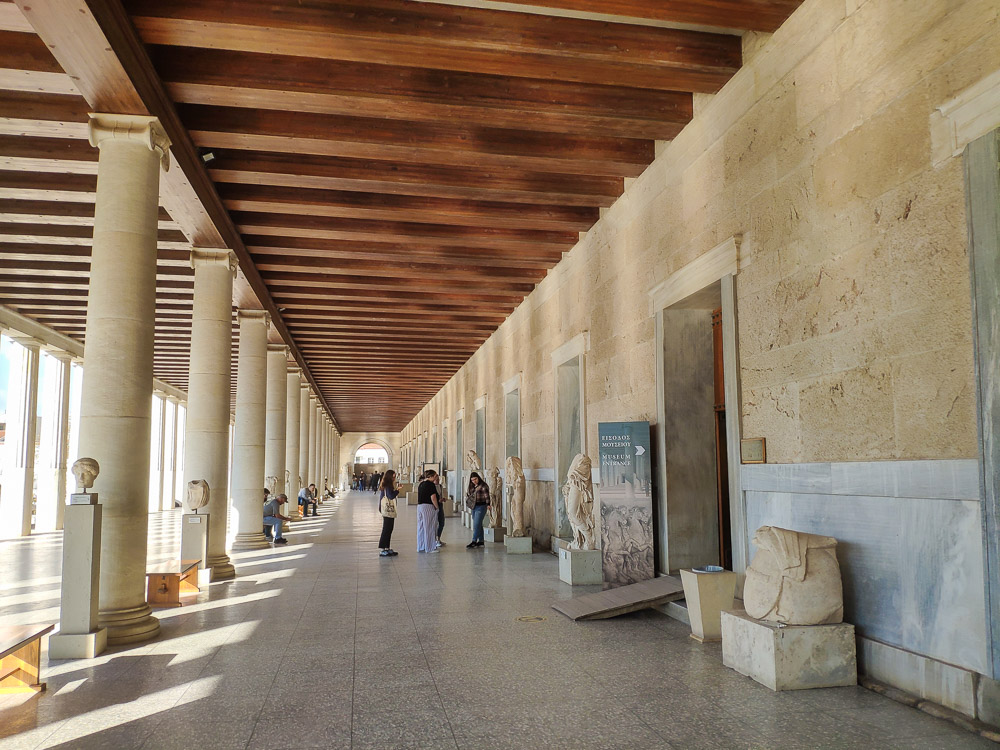
The museum is laid out in a straightforward linear layout, making it very easy to progress through. It also does a good job of explaining the prehistoric past of the site, which is usually overlooked by visitors focusing on the site’s classical era significance.
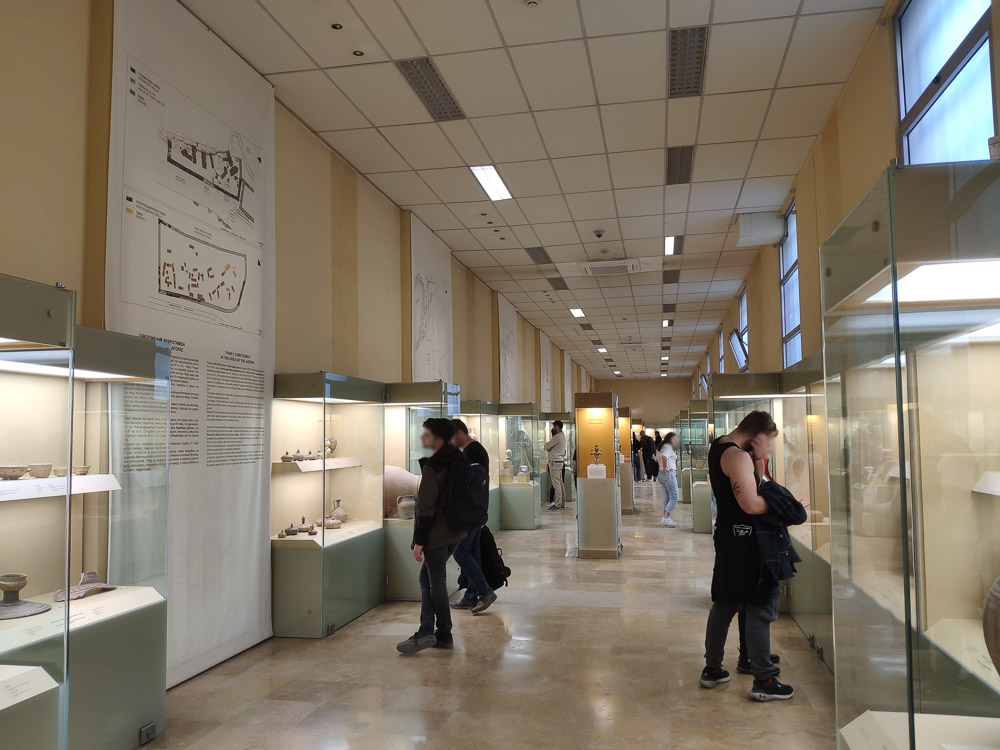
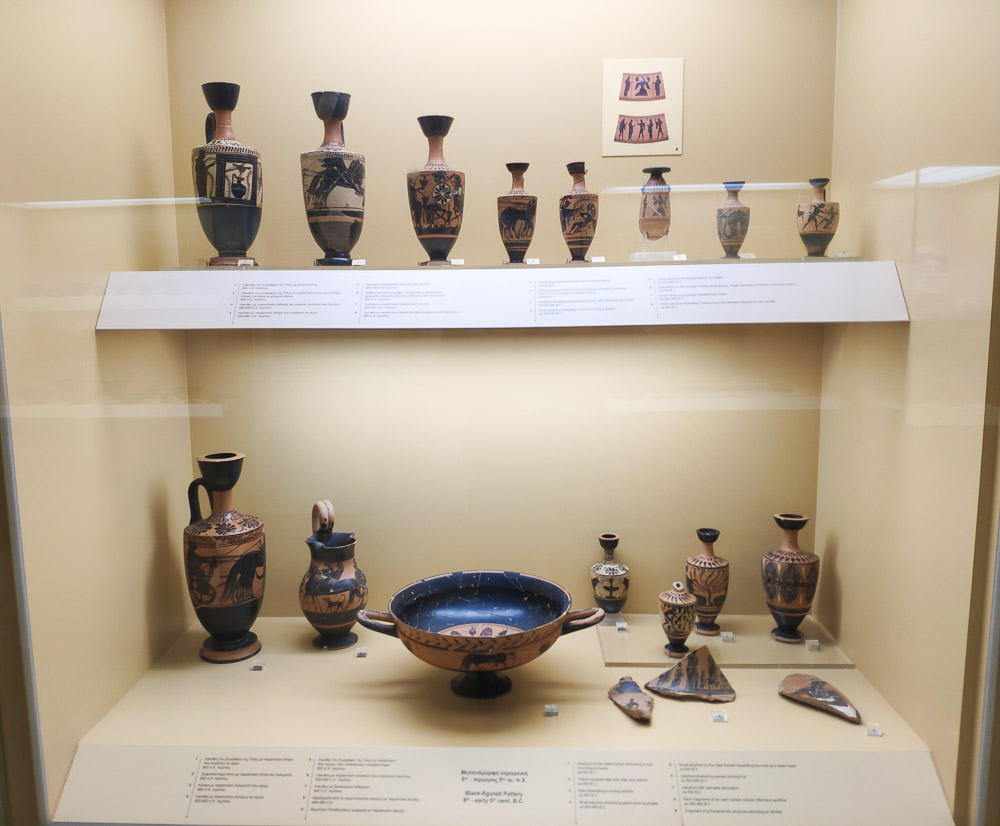
The entrance ticket for the Agora also includes entry to the Museum, so do take a short detour and spend some time in the Museum to get to know the Agora better.
The second floor of the Stoa also houses a collection of busts, but it was unfortunately closed to visitors when I visited.
Temple of Hephaestus | Ναός Ηφαίστου
The Temple of Hephaestus (or “Hephaisteion“), is a former ancient temple dedicated to the Greek god Hephaestus. It is located on the western end of the Agora, and is the next most prominent site in the Agora after the Stoa of Attalos.
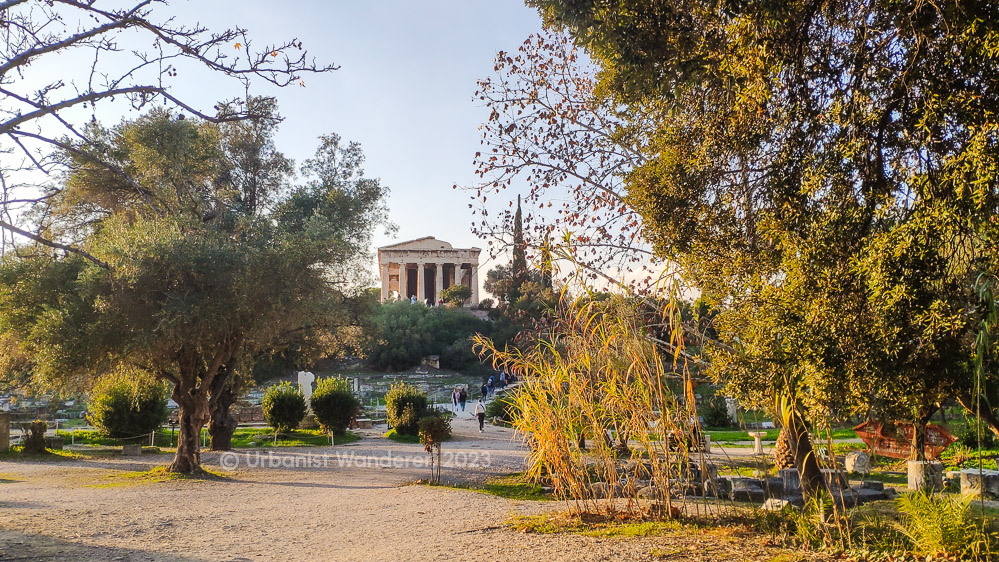
The Temple began construction around 449 BC and was completed around 415 BC after some 34 years. This makes the Temple a contemporary of the Parthenon of the Acropolis, which began construction around 447 BC but was completed much earlier around 432 BC.
Like the Parthenon, the Temple is built in the Doric style, but is significantly smaller and less elaborate in its ornaments. The Temple’s main building material is also Pentelic Marble, just like the Parthenon, the Stoa of Attalos, and many other prominent buildings of the era.
Getting to the Temple requires a short walk up a small hill known as the Agoraios Kolonos (Αγοραίος Κολωνός). The path is paved, but isn’t particularly big and can also get crowded.
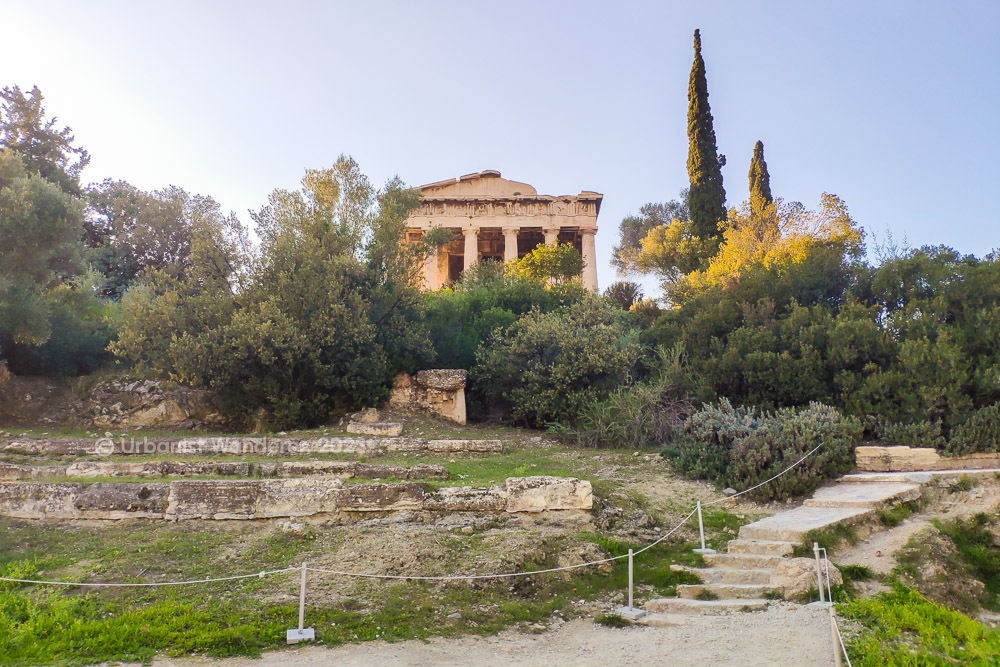
The Temple was converted to a Greek Orthodox Church dedicated to St George Akamates around 700 AD. It served in this function for just over a thousand years until 1834, when it was converted into a museum on orders of King Otto, then the first King of Greece. In 1934, the Temple was given ancient monument status for the first time in its long history.
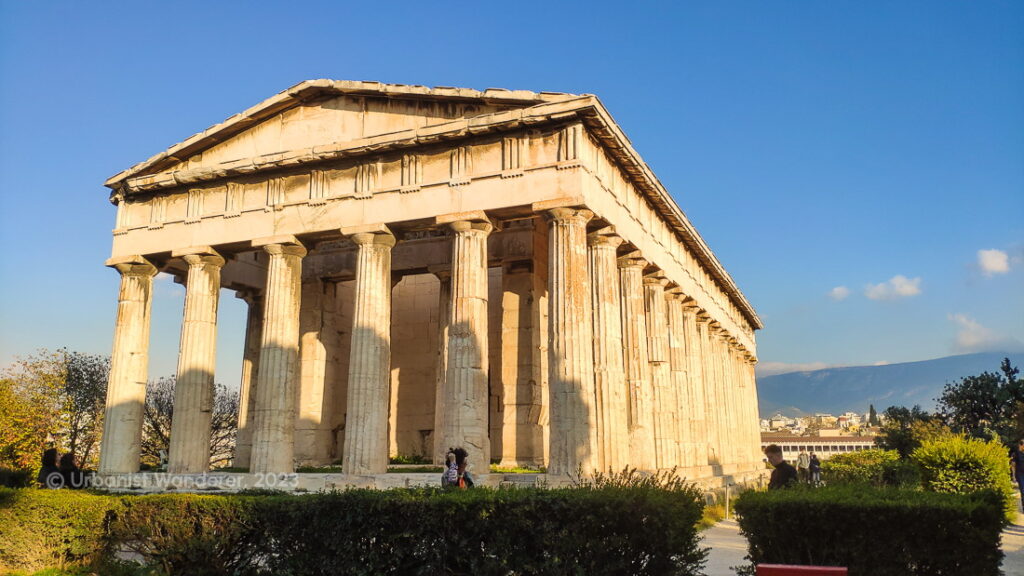
The excellent condition of the structure has been ascribed to this millennia-long sustained usage of the building, and has also turned it into a very popular photo spot in the Agora site. As the Temple is located on a hill, it is not uncommon to see tourists trying to stand on the slopes to get a better angled backdrop for their friends’ or families’ photos. It should be emphasised that you should not do this as the hill is also a working archaeological site.
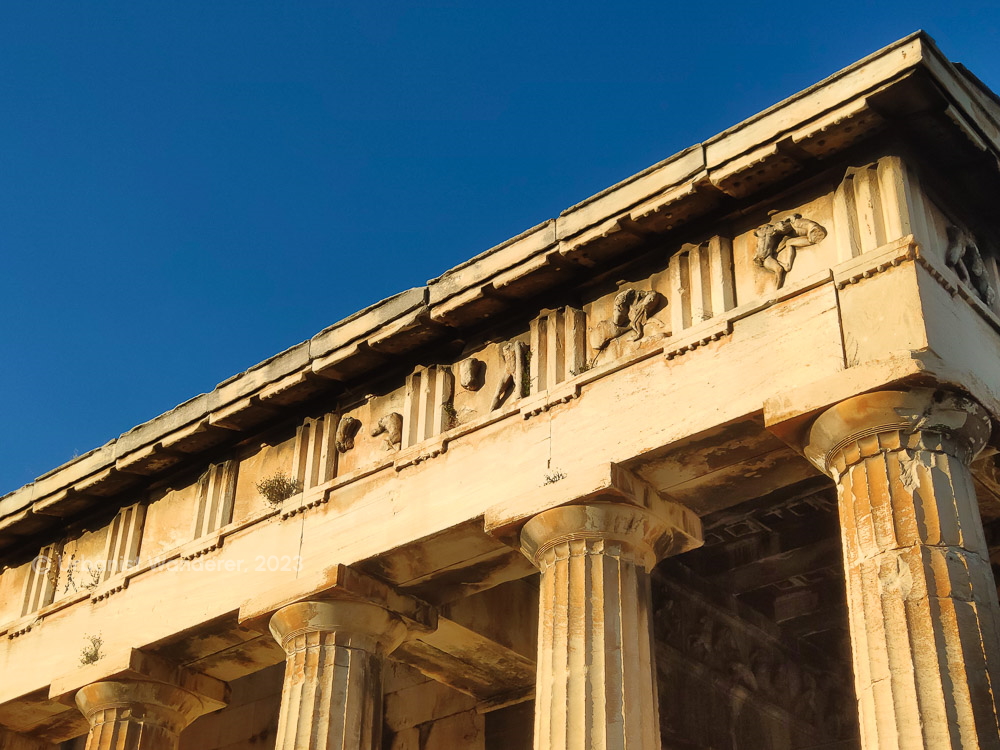
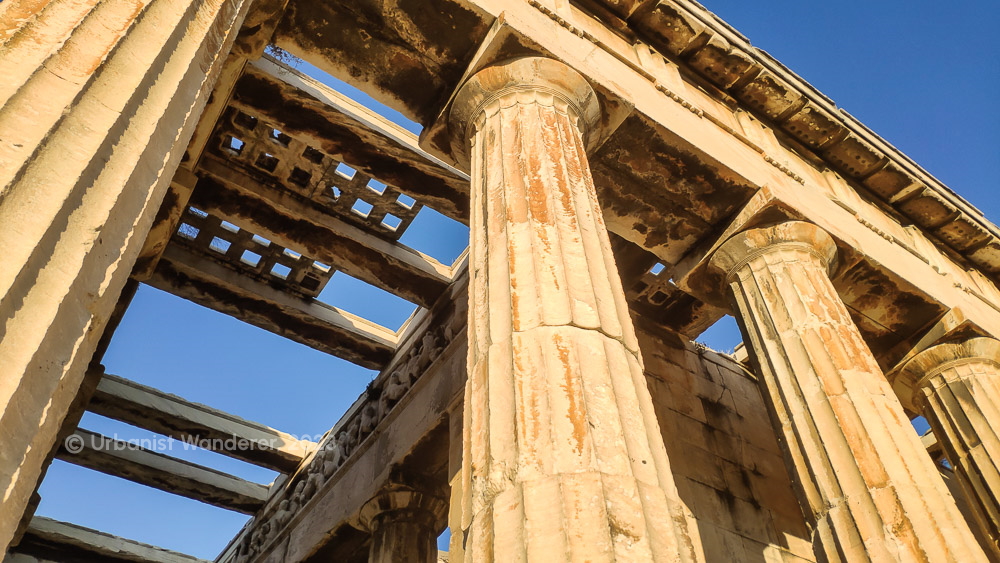
I visited during the evening in winter, and the sunlight bathed the Temple in a golden sheen as it set. This was exceptional lighting for photographing the Temple and really brought out the details of the weathered Doric columns.
If you’re really only visiting for Greek temples, this one is a must-visit.
More from the Agora site
Apart from being the heart of commercial life in the ancient city, the Agora also hosted the ancient city’s key democratic institutions since the 6th century BC.
A particular example was the Bouleterion (βουλευτήριον), the meeting place of the ancient city’s Boule (think of it as the city’s senate). The building itself is now in ruins and unrecognisable at a glance, but you can check out the distinctive remains of the circular Tholos that housed the executives of the Boule, known as the Prytaneis (πρυτάνεις).
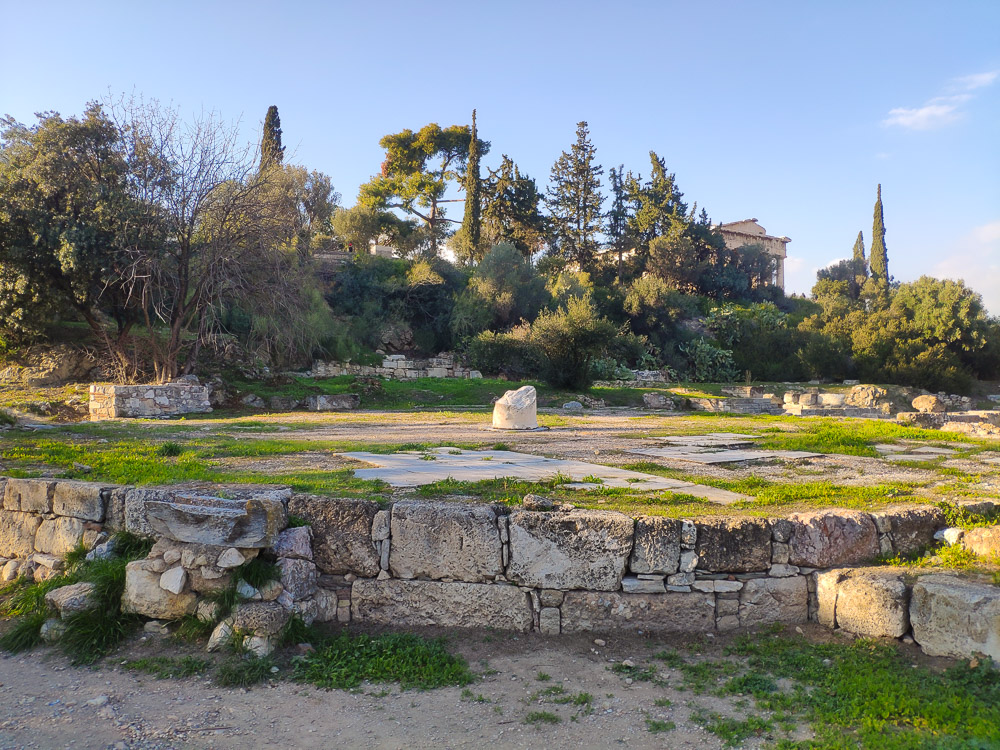
Right across from the Tholos, you can also see the remains of the Monument of the Eponymous Heroes (Μνημείο των Επωνύμων Ηρώων) that once featured bronze statues of the ten heroes representing the tribes of Athens – Erechteus, Aegeus, Pandion, Leos, Acamas, Oeneus, Cecrops II, Hippothoon, Aias, and Antiochus.
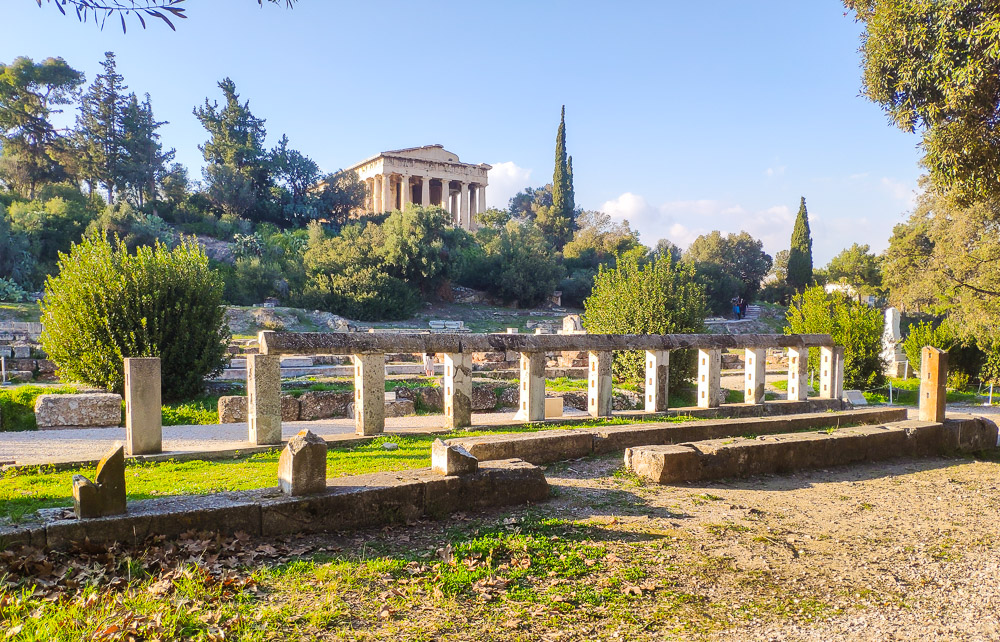
The statues are long gone, but parts of their marble podium remains. What I found interesting was that the setup was also used as kind of a one-stop information centre for the Athenians, as proposed laws, decrees, and announcements were posted on the monument for public access.
Further southwestwards are the supposed remains of the Athens State Prison. This is a rather isolated spot in the Agora as it was historically outside of its former boundaries, and so is easily overlooked by visitors.
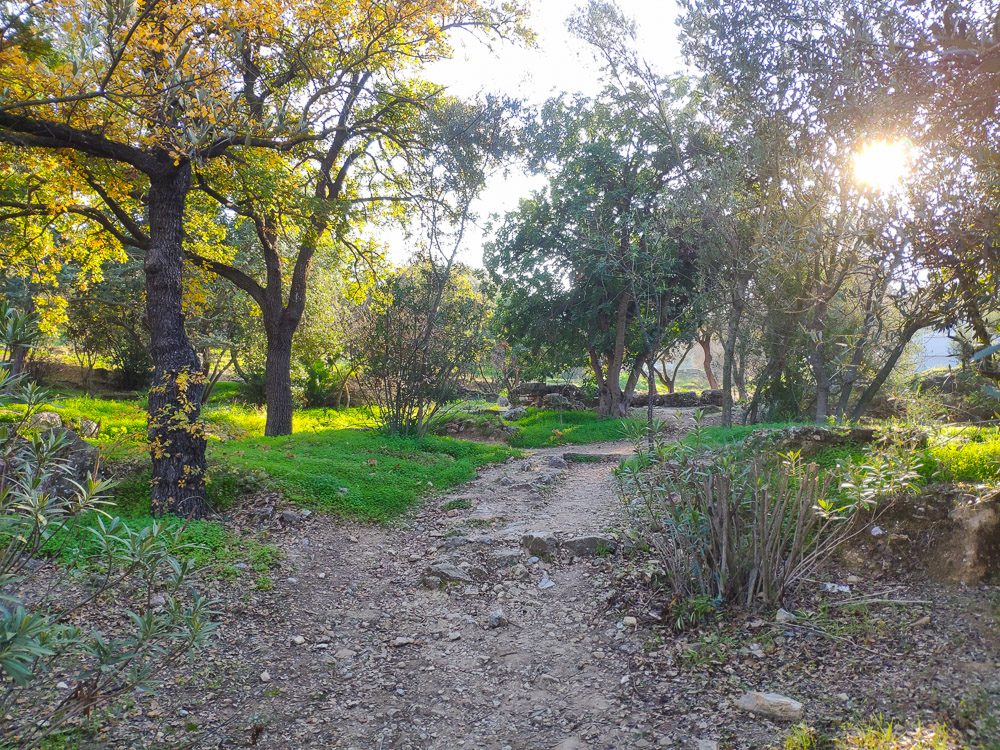
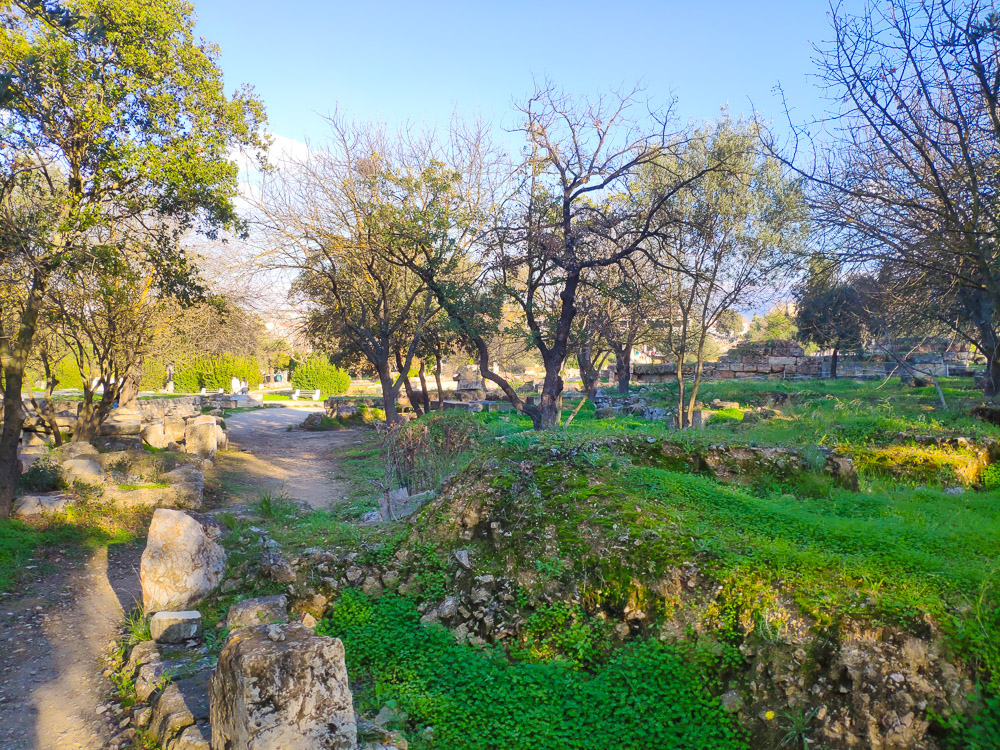
When I visited, vegetation was growing healthily on the site and had actually partially covered the stone marking the name of the site. At first glance, it looked a bit like a small park landscaped with boulders, until I realised I was looking at ancient ruins.
Head back towards the Stoa of Attalos and you might notice a distinct domed structure with a crucifix on its roof. This is the Church of the Holy Apostles of Solaki, a Byzantine era church dated to around the late 10th century AD.
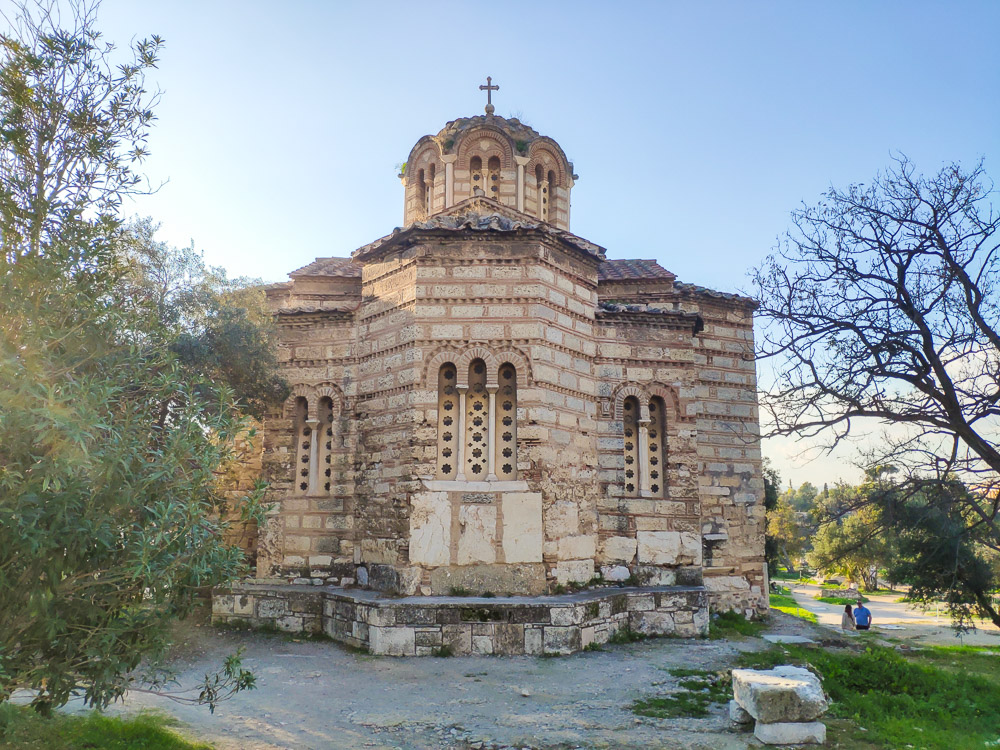
Both the church and the Temple of Hephaestus are the only buildings in the Agora that have survived intact since its completion.
Why you should visit the Ancient Agora
The ruins of the Agora today doesn’t have the grandeur radiated by the Acropolis, but its former status as the commercial and political heart of ancient Athens arguably makes it far more important in the day-to-day life of ancient Athenians. This was the busy marketplace where crafted wares were produced and sold; and where the everyday functions of the city’s democracy were carried out.
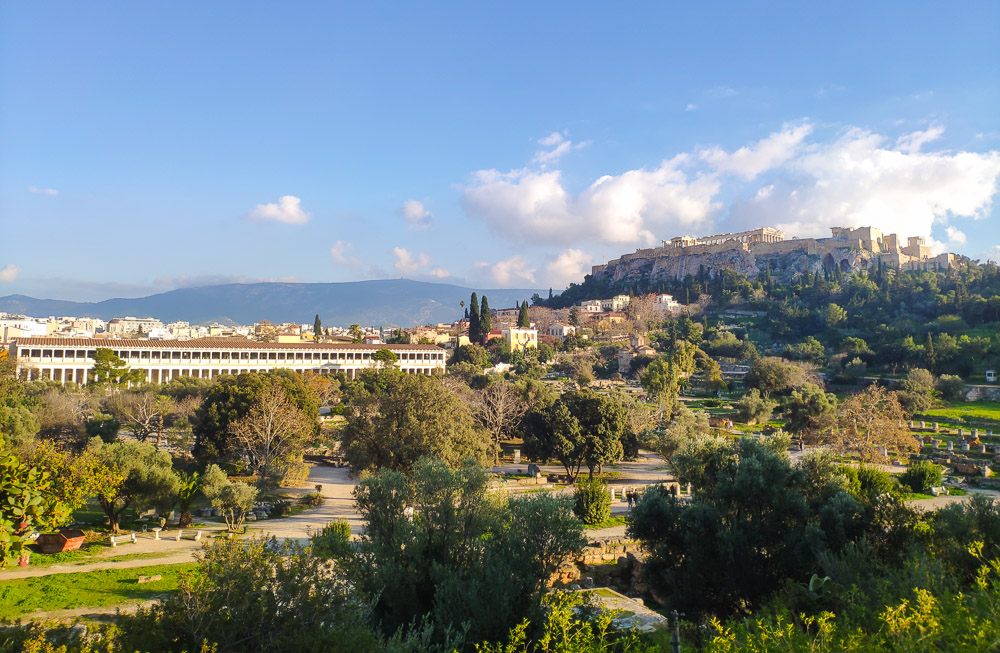
Essentially, ancient Athens could not function without the Agora.
So if you find yourself in Athens with 2 hours free in the evening after visiting the Acropolis, why not drop by the Ancient Agora?
Visitor Information
Location
The entrance to the Agora site is located on Adrianou Street (Οδός Αδριανού), with a small ticket booth setup for ticket purchases.
Google Maps coordinates: 37.975880, 23.723204
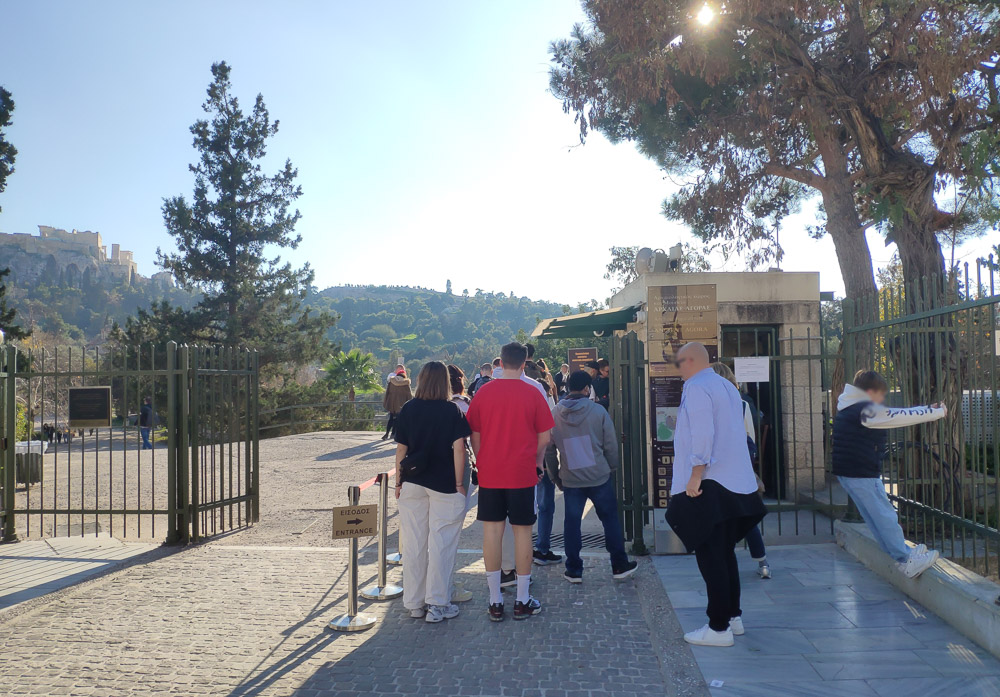
Adrianou Street hosts a row of restaurants and can get very busy due to its narrow size. This is the case even during “off-peak” seasons like winter.
Public transport connections
The closest Athens Metro station is Monastiraki (Μοναστηράκι), on Line 1 (Green) of the Athens Metro. Exit the station facing the ruins of Hadrian’s Library (it’s very prominent), turn right, walk a short distance down Areos Street (Οδος Αρεωσ), then turn right onto Adrianou Street (Οδός Αδριανού) and walk straight down until you see the Stoa of Attalos.
Monastiraki and Adrianou Street are very crowded spots. Beware of pickpockets and safeguard your belongings.
Ticket Prices
Tickets can be purchased with cash (Euros only), or with cards.
| Period | Ticket Cost (€) |
|---|---|
| April to October (Summer) | 10.00 |
| November to March (Winter) | 5.00 |
You can also spend €30.00 for a combined ticket valid for 5 days. This gives you access to 7 sites: The Acropolis, Ancient Agora, Roman Agora, Kerameikos, Hadrian’s Library, Aristotle’s Lykeion, and the Temple of the Olympian Zeus. I personally think this is more useful in the summer months, instead of the winter months with the discounted tickets.
There are also free admissions to the site on the following days:
- 6 March (in memory of Melina Mercouri)
- 18 April (International Monuments Day)
- 18 May (International Museums Day)
- The last weekend of September annually (European Heritage Day)
- 28 October (Oxi Day | Ημέρα του όχι)
- Every first Sunday from November 1st to March 31st (Winter Months)
For more information and a list of visitors entitled to free admission, please visit the Greek Ministry of Culture and Sports’ info page for the Ancient Agora.
Note: Ticket officers might get annoyed if you try to purchase tickets with coins instead of the banknotes.
Opening Hours
| Period | Opening Hours |
|---|---|
| 1 April – 31 October (Summer) | 8:00 am – 8:00 pm |
| 1 November – 31 March (Winter) | 8:00 am – 5:00 pm |
Changes to opening hours are generally noted on the Greek Ministry of Culture and Sports’ info page for the Ancient Agora.

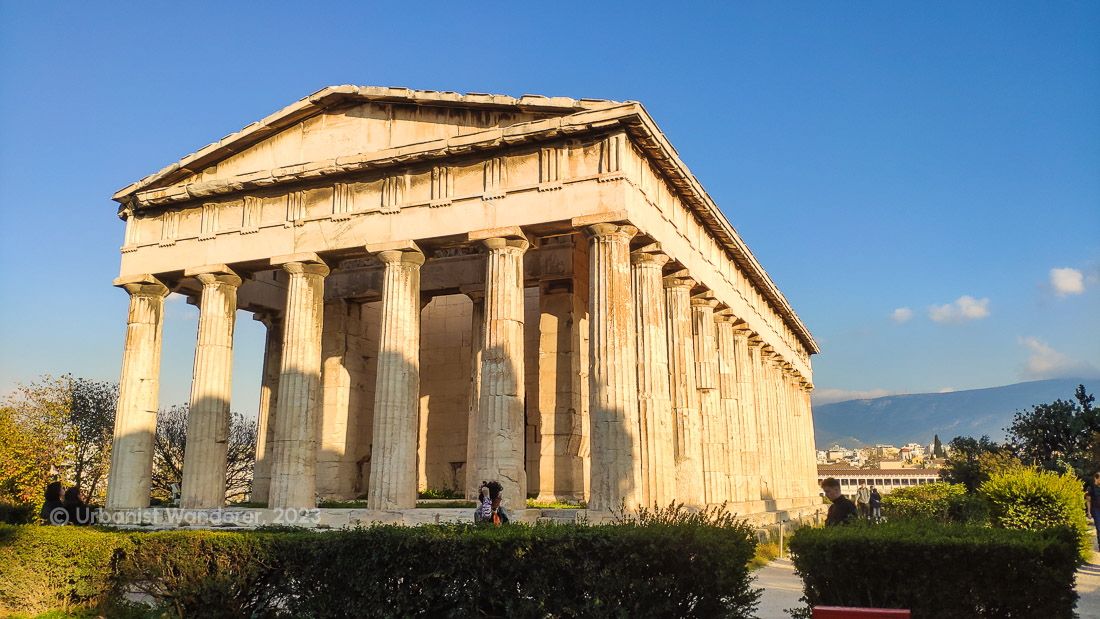
Leave a Reply